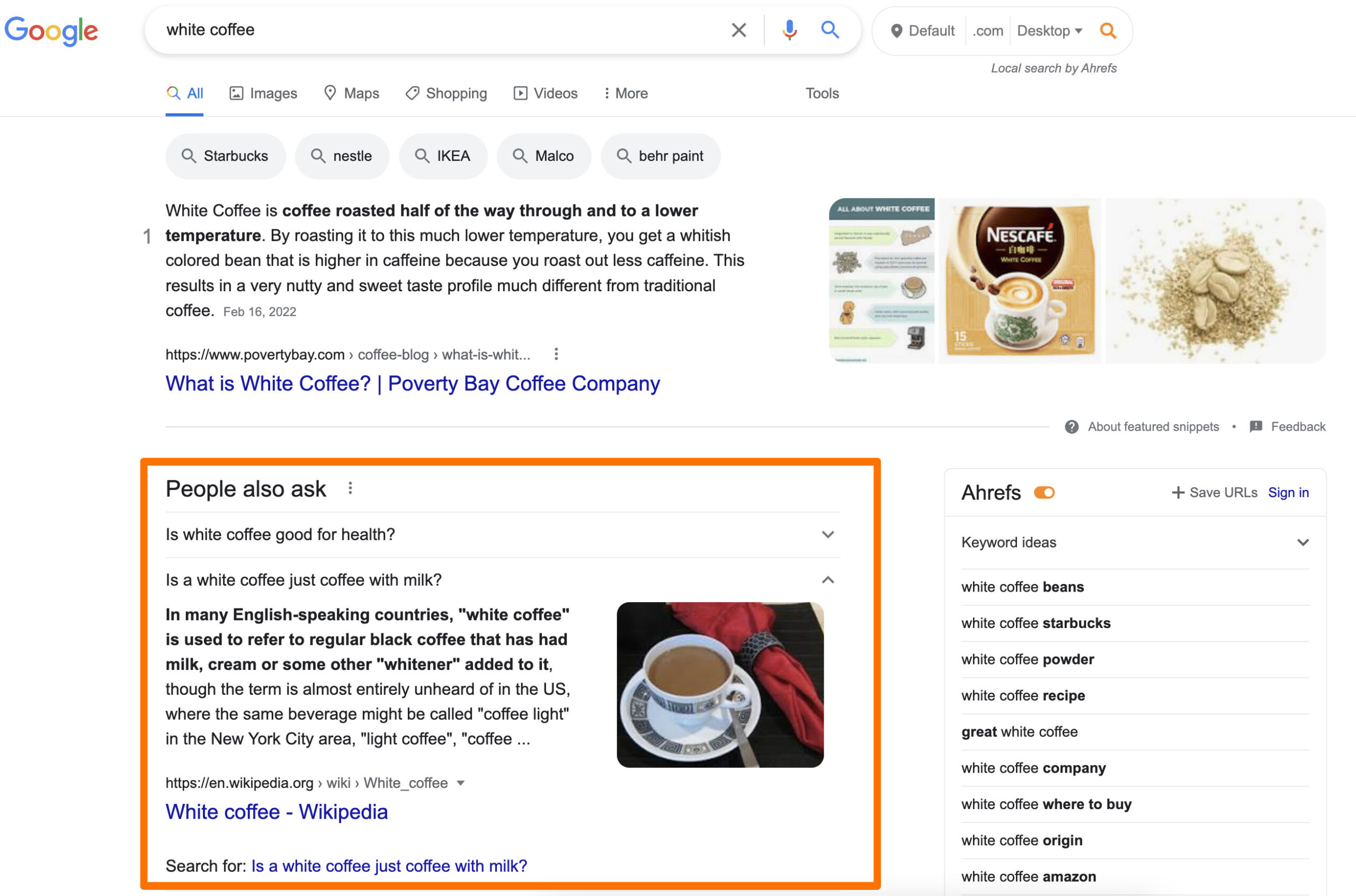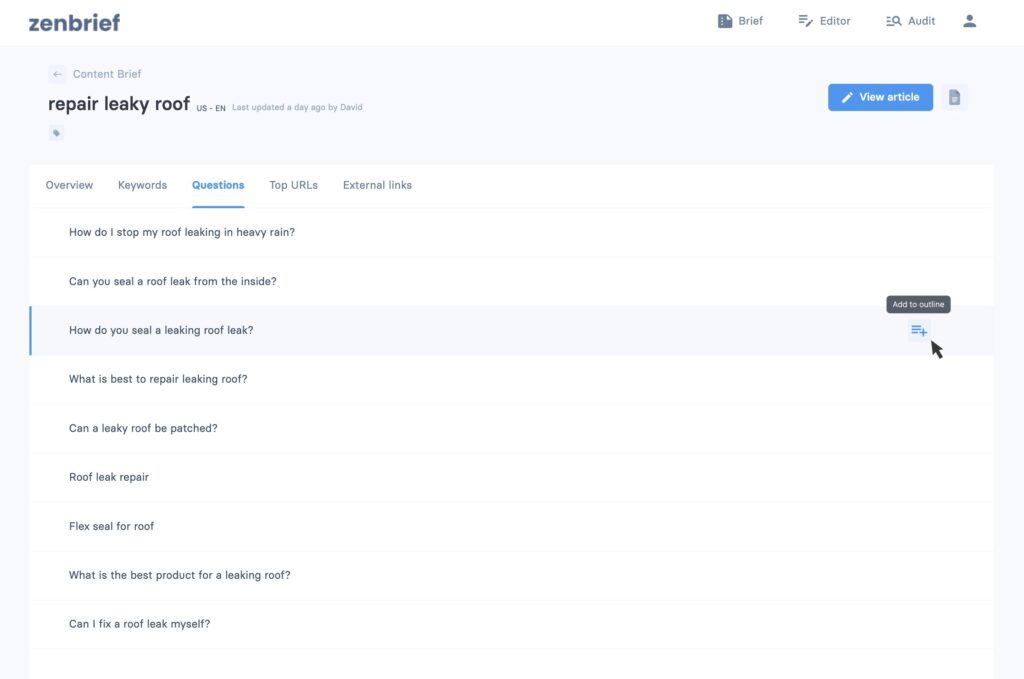Understanding the Algorithm Behind People Also Ask: A Deep Dive
The People Also Ask (PAA) algorithm is a complex system that uses various signals to determine which questions and answers to display in the PAA section. At its core, the algorithm is designed to provide users with a more comprehensive and accurate search experience. To achieve this, the algorithm uses a combination of entity-based search, natural language processing, and user behavior signals.
Entity-based search is a key component of the PAA algorithm. This involves identifying and understanding the entities that are relevant to a particular search query. Entities can include people, places, organizations, and things, and the algorithm uses various techniques to identify and disambiguate them. For example, if a user searches for “Apple,” the algorithm must determine whether they are referring to the fruit or the technology company.
Natural language processing (NLP) is another important aspect of the PAA algorithm. NLP involves analyzing and understanding the meaning of language, including the nuances of human communication. The algorithm uses NLP to identify the intent behind a search query and to determine which questions and answers are most relevant to the user’s needs.
User behavior signals are also an important factor in the PAA algorithm. These signals include data on how users interact with the search results, such as which links they click on and how long they stay on a particular page. The algorithm uses this data to refine its understanding of what users are looking for and to improve the relevance of the PAA section.
By understanding the algorithm behind People Also Ask, businesses and individuals can optimize their content to appear in the PAA section. This can be achieved by creating high-quality, informative, and engaging content that addresses the questions and concerns of their target audience. Additionally, using techniques such as entity markup and schema can help search engines understand the context and relevance of their content, improving their chances of appearing in the PAA section.
Optimizing for the PAA algorithm requires a deep understanding of how it works and what factors influence its decisions. By staying up-to-date with the latest developments and best practices, businesses and individuals can improve their chances of appearing in the PAA section and increasing their online visibility.
Keyword Research Strategies to Optimize for People Also Ask
Keyword research is a crucial step in optimizing for People Also Ask. By identifying relevant questions, phrases, and topics, businesses and individuals can increase their chances of appearing in the PAA section. To conduct effective keyword research, it’s essential to understand the types of keywords that are most likely to trigger the PAA feature.
Long-tail keywords are a great place to start. These are specific phrases that have lower search volumes, but are also less competitive. By targeting long-tail keywords, businesses and individuals can increase their chances of appearing in the PAA section. For example, instead of targeting the keyword “how to rank in people also ask,” a more specific phrase like “how to optimize for people also ask” may be more effective.
Another effective strategy is to use question-based keywords. The PAA feature is designed to answer questions, so it makes sense to target keywords that are phrased as questions. For example, “what is people also ask” or “how does people also ask work” could be effective keywords to target.
It’s also essential to consider the intent behind the search query. Are users searching for informational content, or are they looking for a specific product or service? By understanding the intent behind the search query, businesses and individuals can create content that is more likely to appear in the PAA section.
Tools like Google Keyword Planner, Ahrefs, and SEMrush can help with keyword research. These tools provide insights into search volume, competition, and suggested bid prices, making it easier to identify relevant keywords and phrases. By using these tools, businesses and individuals can create a comprehensive keyword strategy that increases their chances of appearing in the PAA section.
Once the keyword research is complete, it’s essential to incorporate the target keywords into the content. This can be done by using the keywords in the title, meta description, and headings. However, it’s essential to avoid keyword stuffing, as this can lead to penalties from search engines.
By conducting effective keyword research and incorporating the target keywords into the content, businesses and individuals can increase their chances of appearing in the PAA section. This can lead to increased online visibility, credibility, and ultimately, more traffic and sales.
Content Creation Tips to Increase Your Chances of Appearing in People Also Ask
Creating high-quality, informative, and engaging content is crucial to increasing your chances of appearing in the People Also Ask section. To achieve this, it’s essential to understand what types of content are most likely to be featured in the PAA section. Typically, this includes content that answers specific questions, provides solutions to problems, or offers unique insights and perspectives.
One effective way to create PAA-friendly content is to focus on question-based topics. This can include creating content that answers common questions related to your industry or niche. For example, if you’re a fitness expert, you could create content that answers questions like “How to lose weight quickly” or “What are the best exercises for building muscle?”
Another key aspect of creating PAA-friendly content is to ensure that it’s informative and engaging. This can be achieved by using a variety of content formats, such as videos, infographics, and blog posts. Additionally, using attention-grabbing headlines and introductions can help to capture the reader’s attention and encourage them to read on.
It’s also essential to optimize your content for user experience. This includes ensuring that your content is easy to read and understand, and that it provides value to the reader. By focusing on user experience, you can increase the chances of your content being featured in the PAA section.
Furthermore, using entity markup and schema can help search engines understand the context and relevance of your content. This can include using schema.org markup to highlight specific entities, such as people, places, and organizations. By using entity markup and schema, you can increase the chances of your content being featured in the PAA section.
Finally, it’s essential to ensure that your content is regularly updated and refreshed. This can help to keep your content relevant and fresh, and can increase the chances of it being featured in the PAA section. By following these content creation tips, you can increase your chances of appearing in the People Also Ask section and driving more traffic to your website.
By creating high-quality, informative, and engaging content, you can increase your chances of appearing in the People Also Ask section. This can drive more traffic to your website, increase your online visibility, and establish your brand as an authority in your industry. By following these tips, you can unlock the power of People Also Ask and take your online presence to the next level.
The Role of Entity Markup and Schema in People Also Ask Optimization
Entity markup and schema play a crucial role in helping search engines understand the context and relevance of your content. By using entity markup and schema, you can provide search engines with additional information about your content, such as the entities mentioned, the relationships between them, and the context in which they are used.
Entity markup is a type of microdata that is used to highlight specific entities on a webpage. This can include entities such as people, places, organizations, and things. By using entity markup, you can help search engines understand the context and relevance of your content, and improve your chances of appearing in the People Also Ask section.
Schema is a type of markup language that is used to provide search engines with additional information about a webpage. This can include information such as the title, description, and keywords of the page, as well as the entities mentioned and the relationships between them. By using schema, you can provide search engines with a more complete understanding of your content, and improve your chances of appearing in the People Also Ask section.
One of the most effective ways to use entity markup and schema is to use schema.org markup. This is a collaborative project between Google, Bing, and Yahoo that provides a common set of schemas for webmasters to use. By using schema.org markup, you can provide search engines with a more complete understanding of your content, and improve your chances of appearing in the People Also Ask section.
Another effective way to use entity markup and schema is to use Google’s Structured Data Markup Helper. This is a tool that allows you to easily add schema markup to your webpages. By using this tool, you can provide search engines with a more complete understanding of your content, and improve your chances of appearing in the People Also Ask section.
By using entity markup and schema, you can improve your chances of appearing in the People Also Ask section. This can drive more traffic to your website, increase your online visibility, and establish your brand as an authority in your industry. By following these tips, you can unlock the power of People Also Ask and take your online presence to the next level.
It’s also important to note that entity markup and schema are not a replacement for high-quality content. You should always focus on creating content that is informative, engaging, and relevant to your target audience. By combining high-quality content with entity markup and schema, you can improve your chances of appearing in the People Also Ask section and driving more traffic to your website.
Building High-Quality Backlinks to Enhance Your People Also Ask Visibility
Building high-quality backlinks is an essential step in enhancing your People Also Ask visibility. Backlinks are links from other websites that point to your website, and they play a crucial role in determining your website’s authority and credibility. By building high-quality backlinks from authoritative sources, you can increase your online credibility and visibility in People Also Ask.
One of the most effective ways to build high-quality backlinks is to create high-quality, informative, and engaging content that other websites want to link to. This can include blog posts, articles, infographics, and videos that provide value to your target audience. By creating high-quality content, you can attract links from other websites and increase your online credibility.
Another effective way to build high-quality backlinks is to participate in guest blogging. Guest blogging involves writing articles for other websites in exchange for a link back to your website. By participating in guest blogging, you can build relationships with other websites and increase your online credibility.
It’s also important to note that not all backlinks are created equal. High-quality backlinks come from authoritative sources, such as government websites, educational institutions, and reputable businesses. By building high-quality backlinks from these sources, you can increase your online credibility and visibility in People Also Ask.
Additionally, you can also use tools like Ahrefs, SEMrush, and Moz to find high-quality backlink opportunities. These tools provide insights into your website’s backlink profile and help you identify opportunities to build high-quality backlinks.
By building high-quality backlinks, you can increase your online credibility and visibility in People Also Ask. This can drive more traffic to your website, increase your online visibility, and establish your brand as an authority in your industry. By following these tips, you can unlock the power of People Also Ask and take your online presence to the next level.
It’s also important to note that building high-quality backlinks takes time and effort. It’s not a one-time task, but rather an ongoing process that requires consistent effort and attention. By building high-quality backlinks over time, you can increase your online credibility and visibility in People Also Ask and drive more traffic to your website.
Tracking and Measuring Your People Also Ask Performance
Tracking and measuring your People Also Ask performance is crucial to understanding the effectiveness of your optimization strategies. By using tools like Google Search Console, SEMrush, and Ahrefs, you can gain insights into your website’s performance and identify areas for improvement.
Google Search Console is a free tool that provides insights into your website’s search engine rankings, impressions, and clicks. By using Google Search Console, you can track your website’s performance in People Also Ask and identify opportunities to improve your optimization strategies.
SEMrush is a paid tool that provides insights into your website’s search engine rankings, competitor analysis, and technical SEO audits. By using SEMrush, you can track your website’s performance in People Also Ask and identify opportunities to improve your optimization strategies.
Ahrefs is a paid tool that provides insights into your website’s backlink profile, keyword rankings, and content analysis. By using Ahrefs, you can track your website’s performance in People Also Ask and identify opportunities to improve your optimization strategies.
When tracking and measuring your People Also Ask performance, it’s essential to focus on key metrics such as impressions, clicks, and click-through rate (CTR). By analyzing these metrics, you can gain insights into the effectiveness of your optimization strategies and identify areas for improvement.
Additionally, it’s essential to track your website’s ranking positions in People Also Ask. By tracking your ranking positions, you can gain insights into the effectiveness of your optimization strategies and identify opportunities to improve your ranking.
By tracking and measuring your People Also Ask performance, you can refine your optimization strategies and improve your website’s visibility in People Also Ask. This can drive more traffic to your website, increase your online visibility, and establish your brand as an authority in your industry.
It’s also important to note that tracking and measuring your People Also Ask performance is an ongoing process. By regularly monitoring your website’s performance, you can identify opportunities to improve your optimization strategies and stay ahead of the competition.
Common Mistakes to Avoid When Optimizing for People Also Ask
When optimizing for People Also Ask, there are several common mistakes to avoid. These mistakes can negatively impact your online visibility and credibility, and can even lead to penalties from search engines.
One of the most common mistakes is keyword stuffing. This involves using the same keyword or phrase repeatedly in your content, in an attempt to manipulate search engine rankings. However, this tactic is not only ineffective, but it can also lead to penalties from search engines.
Another common mistake is creating thin content. This involves creating content that is low-quality, uninformative, or lacking in substance. Thin content can negatively impact your online visibility and credibility, and can even lead to penalties from search engines.
Neglecting user experience is also a common mistake. This involves creating content that is not user-friendly, or that does not provide value to the reader. Neglecting user experience can negatively impact your online visibility and credibility, and can even lead to penalties from search engines.
Not optimizing for mobile is also a common mistake. This involves creating content that is not optimized for mobile devices, or that does not provide a good user experience on mobile. Not optimizing for mobile can negatively impact your online visibility and credibility, and can even lead to penalties from search engines.
Not using header tags is also a common mistake. This involves not using header tags (H1, H2, H3, etc.) to structure and organize your content. Not using header tags can negatively impact your online visibility and credibility, and can even lead to penalties from search engines.
By avoiding these common mistakes, you can improve your chances of ranking in People Also Ask and increasing your online visibility and credibility. Remember to always prioritize user experience, create high-quality and informative content, and optimize for mobile.
Additionally, it’s essential to stay up-to-date with the latest best practices and guidelines for optimizing for People Also Ask. This involves regularly checking for updates from search engines, and adjusting your optimization strategies accordingly.
By following these tips and avoiding common mistakes, you can unlock the power of People Also Ask and take your online presence to the next level.
Common Mistakes to Avoid When Optimizing for People Also Ask
When optimizing for People Also Ask, there are several common mistakes to avoid. These mistakes can negatively impact your online visibility and credibility, and can even lead to penalties from search engines.
One of the most common mistakes is keyword stuffing. This involves using the same keyword or phrase repeatedly in your content, in an attempt to manipulate search engine rankings. However, this tactic is not only ineffective, but it can also lead to penalties from search engines.
Another common mistake is creating thin content. This involves creating content that is low-quality, uninformative, or lacking in substance. Thin content can negatively impact your online visibility and credibility, and can even lead to penalties from search engines.
Neglecting user experience is also a common mistake. This involves creating content that is not user-friendly, or that does not provide value to the reader. Neglecting user experience can negatively impact your online visibility and credibility, and can even lead to penalties from search engines.
Not optimizing for mobile is also a common mistake. This involves creating content that is not optimized for mobile devices, or that does not provide a good user experience on mobile. Not optimizing for mobile can negatively impact your online visibility and credibility, and can even lead to penalties from search engines.
Not using header tags is also a common mistake. This involves not using header tags (H1, H2, H3, etc.) to structure and organize your content. Not using header tags can negatively impact your online visibility and credibility, and can even lead to penalties from search engines.
By avoiding these common mistakes, you can improve your chances of ranking in People Also Ask and increasing your online visibility and credibility. Remember to always prioritize user experience, create high-quality and informative content, and optimize for mobile.
Additionally, it’s essential to stay up-to-date with the latest best practices and guidelines for optimizing for People Also Ask. This involves regularly checking for updates from search engines, and adjusting your optimization strategies accordingly.
By following these tips and avoiding common mistakes, you can unlock the power of People Also Ask and take your online presence to the next level.






